- Nature / Scenery
- History / Culture
- Gourmet
- Traditions / Performing Arts
No.f_0031
A Journey through the Shadows: Smoke and Light Across the Ancient Capital
Jun’ichiro Tanizaki, one of Japan’s foremost literary figures, vividly explored the “beauty of shadow” that dwells within Japanese architecture and daily life in his 1933 essay In Praise of Shadows. He wrote that the true essence of Japanese beauty lies not in brightness, but in the subtle interplay of light and shadow—the moon filtering through trees, the soft glow behind a shoji paper screen, the dim reflections upon lacquerware. His vision continues to captivate readers to this day.
One of the places that shaped Tanizaki’s aesthetic sensibility was Kyoto, the ancient capital. The quiet shadows that inhabit its temples and gardens deepened his literary world. Another retreat he frequented was Arima Onsen in Hyogo Prefecture.
Let us trace the beauty of light and shadow across two timeless destinations—Kyoto’s Arashiyama and the historic Arima Onsen.
Encounter the Essence of Wabi-Sabi at a World Heritage Temple
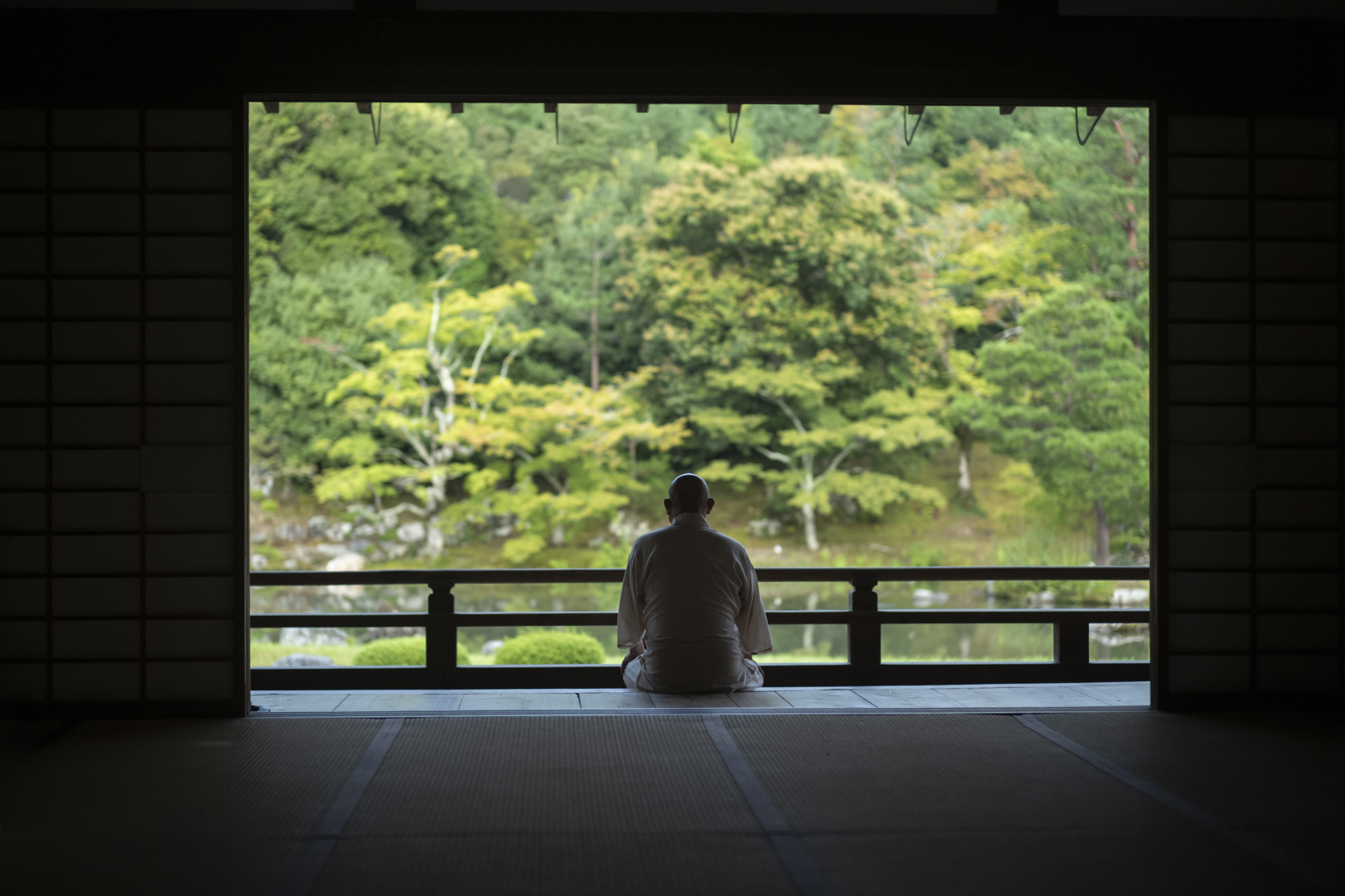 View from the Large Hojo (Abbot’s Quarters).
View from the Large Hojo (Abbot’s Quarters).
Only about twenty minutes from central Kyoto by train, the Saga–Arashiyama area spreads west of the city—an ever-changing landscape of nature, where light and shadow weave together through the seasons. Amid this tranquil setting stands Tenryu-ji Temple, founded in 1339 by Shogun Ashikaga Takauji to console the spirit of Emperor Go-Daigo, and established under the Zen master Muso Soseki. In 1994, it was inscribed as a UNESCO World Heritage Site.
The temple’s Sogenchi Garden, designed by Muso himself, is known today as a stroll-style pond garden, where the scenery shifts with each step and change of angle. Yet its origin lies in the zakan-shiki teien (seated appreciation style garden)—created as a place for monks to sit in meditation each night, facing the garden to purify the heart. When you take a seat on the veranda and gaze out at the view unfolding at eye level, you can sense the spirit of that contemplation.
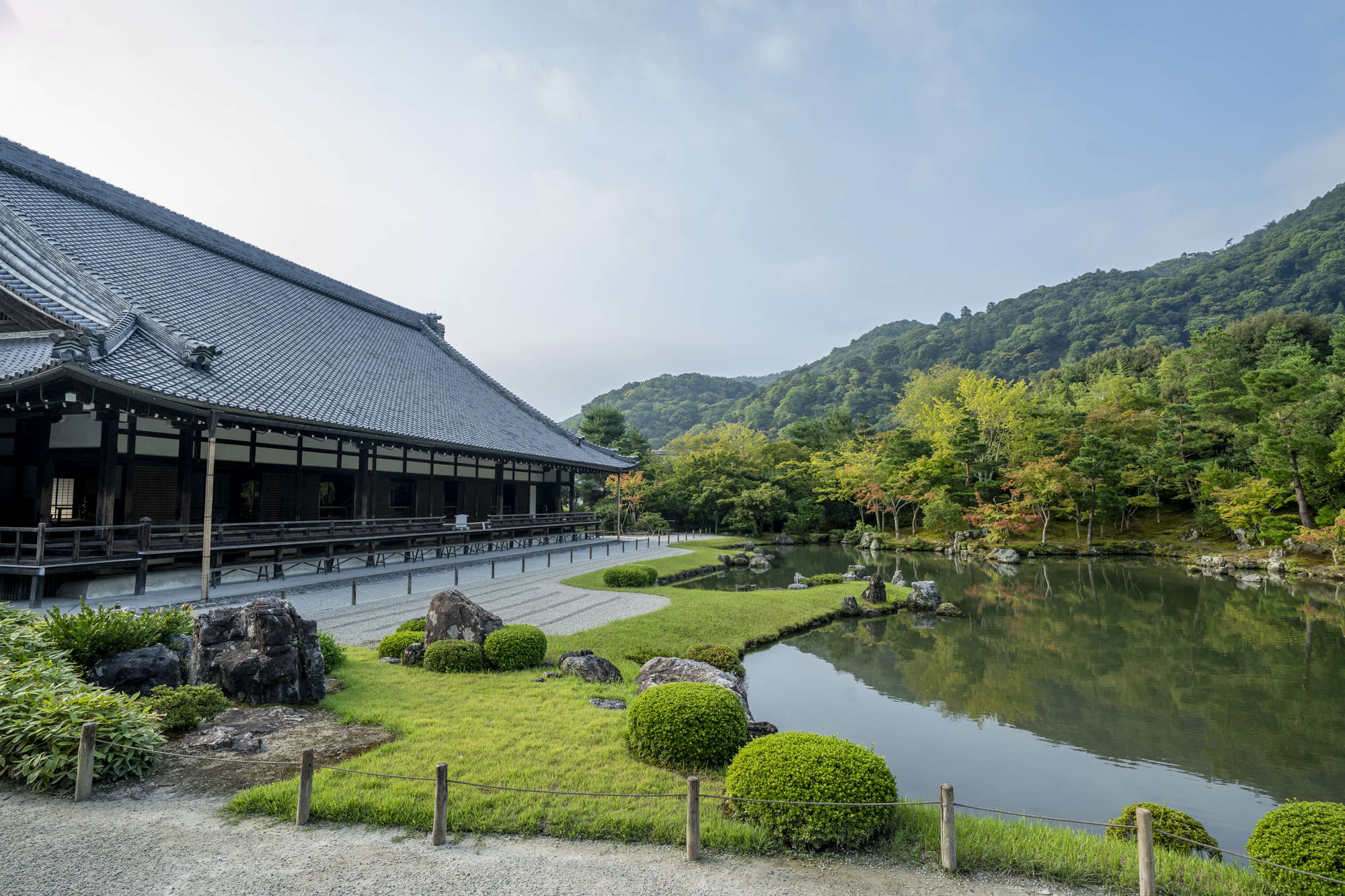 View of the main hall and garden from the study. The pond mirrors the natural scenery of Arashiyama like a sheet of glass.
View of the main hall and garden from the study. The pond mirrors the natural scenery of Arashiyama like a sheet of glass.
Muso Soseki left behind a famous saying: “There is neither gain nor loss in the mountain and the river. Gain and loss exist only in the human mind.” Beauty does not reside inherently in the mountains, the waters, or the trees—it is found only in the eye of the beholder. If you find the garden beautiful, it means your heart is clear. If your mind is clouded, the garden too will appear bleak. This garden, then, is a place that gently leads the heart toward purification.
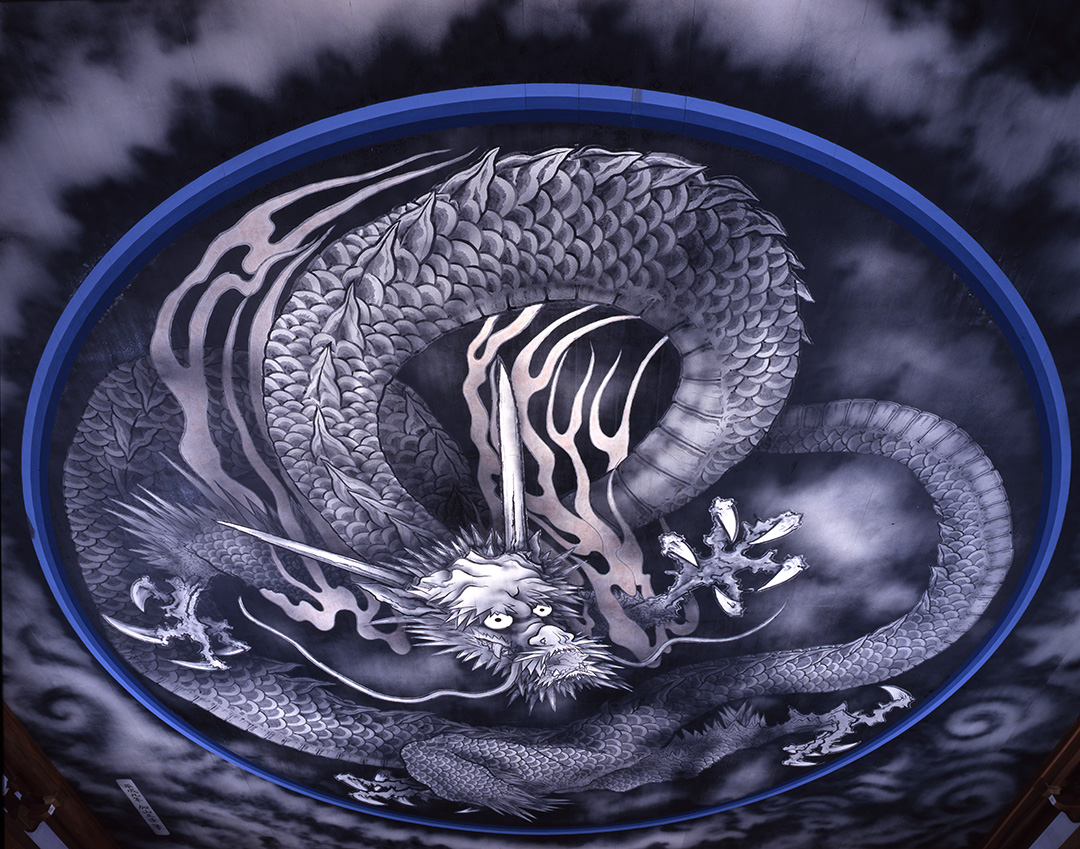 Unryu (“Cloud Dragon”) ceiling painting in the Dharma Hall (Hatto). Open to visitors only on weekends, holidays, and during special viewing periods.
Unryu (“Cloud Dragon”) ceiling painting in the Dharma Hall (Hatto). Open to visitors only on weekends, holidays, and during special viewing periods.
Step inside the Dharma Hall, and you enter a stillness distinct from that of the garden outside. Above, the Cloud Dragon sweeps across the ceiling—a dragon whose gaze follows you from every direction, known as the “Dragon Staring in All Eight Directions.” Its form embodies both power and grace, as if allowing visitors to experience heaven and earth, light and shadow, motion and stillness all at once. In its eyes, one might even glimpse the interplay of light and darkness within oneself.
Walking the Bamboo Grove, Where Shadows Gently Tremble
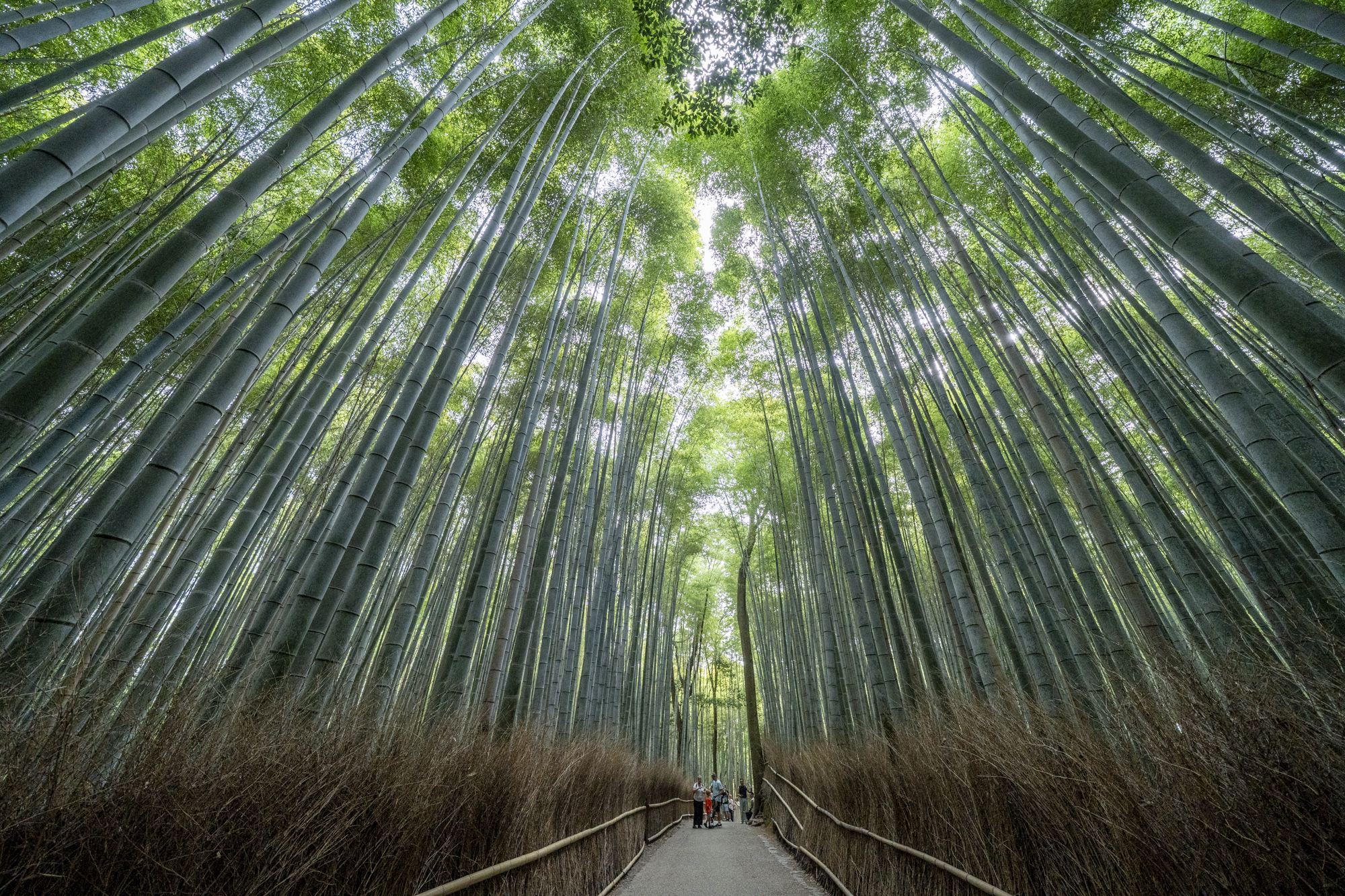 The 400-meter “Bamboo Grove Path” stretching from Nonomiya Shrine to Okochi-Sanso Villa.
The 400-meter “Bamboo Grove Path” stretching from Nonomiya Shrine to Okochi-Sanso Villa.
Exit through the north gate of Tenryu-ji and you’ll find the Bamboo Grove Path, one of Arashiyama’s most iconic sights. Soft light filters through countless stalks of bamboo rising skyward; when the wind blows, their leaves whisper and the dappled sunlight flickers like breath. Here, one feels the same poetic harmony of light and shadow that Tanizaki paid homage to in In Praise of Shadows—still alive, still shimmering in quiet reverence along this path today.
The Fossil Water of an Ancient Sea: The Hot Springs of Arima
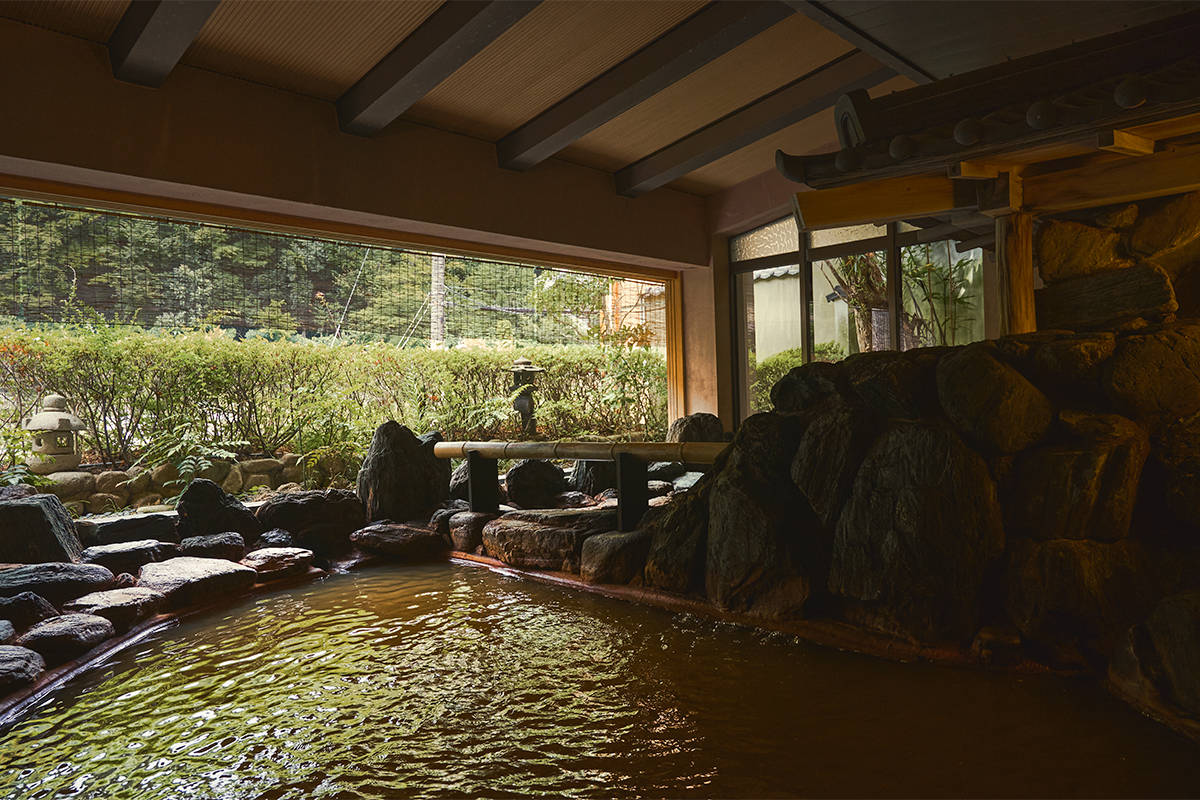 The bath at Goshobo, the oldest inn in Arima. The hot spring flows directly from the kinsen (gold spring) source. The indoor area is divided by gender, with a semi-open-air bath beyond.
The bath at Goshobo, the oldest inn in Arima. The hot spring flows directly from the kinsen (gold spring) source. The indoor area is divided by gender, with a semi-open-air bath beyond.
 The kinsen is colorless when it first rises to the surface, but turns reddish brown as the iron oxidizes on contact with air.
The kinsen is colorless when it first rises to the surface, but turns reddish brown as the iron oxidizes on contact with air.
Soothe the fatigue of your Kyoto journey in one of Japan’s most celebrated hot springs. From Kyoto, Osaka, or Nara, Arima Onsen can be reached in about an hour to an hour and a half by train or bus. Mentioned in ancient chronicles such as the Nihon shoki and Fudoki, Arima is among Japan’s oldest hot springs, along with Shirahama and Dogo, collectively known as the Three Ancient Springs of Japan. It is also famed as the beloved retreat of Toyotomi Hideyoshi, whose legacy remains in the many monuments and sites associated with him throughout the town.
Throughout its long history, Arima has welcomed countless poets and writers — among them, Jun’ichiro Tanizaki.
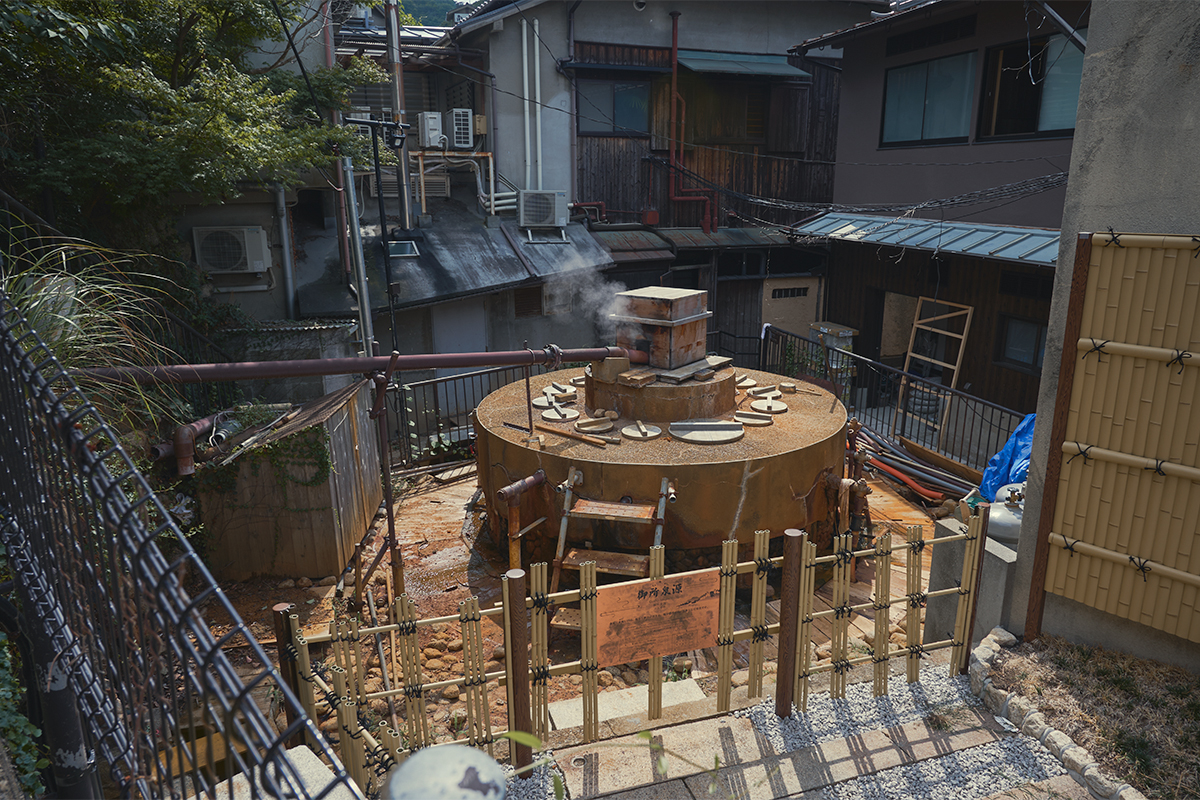 The Gosho spring source, where the kinsen bubbles up. Steam billows into the air.
The Gosho spring source, where the kinsen bubbles up. Steam billows into the air.
When one thinks of Arima, it is the reddish-brown, mineral-rich kinsen that comes to mind. While most of Japan’s hot springs are volcanic in origin, Arima’s waters are non-volcanic. They are formed from ancient seawater that seeped deep underground millions of years ago and, through contact with subterranean heat and rock layers during tectonic shifts, underwent a slow chemical transformation before emerging at the surface. In this sense, it is truly “fossil water of an ancient sea,” a spring that carries within it the memory of the earth itself.
The water’s high concentrations of iron and salt give it remarkable heat-retaining properties. After bathing, a thin film seems to form on the skin, locking in warmth so that the body stays heated long after leaving the bath. Known since ancient times as a “bath of heat,” it is said to help with poor circulation, neuralgia, and joint pain, and has long been cherished by locals and travelers alike.
The easiest place to enjoy the kinsen is the Kin no Yu public bathhouse (admission: 800 yen for adults), located right in the center of the hot spring district. Always bustling with both locals and visitors, it also offers a free footbath outside for anyone to soak in.
In modern times, the medical properties of carbonated and radium springs have also attracted attention, leading to the popularity of the ginsen (silver spring) — a clear, silky, colorless bath. While the Kinsen gently warms the body from the outside, the ginsen is said to promote blood circulation and warm the body from within.
A recommended way to bathe is to begin with the kinsen, allowing the heat to penetrate deeply, and then soak in the ginsen to stimulate blood flow. Alternating between the two enhances sweating and refreshment, leaving the body fully rejuvenated. Many visitors come to Arima specifically to enjoy both springs, savoring the contrasting qualities of gold and silver waters.
BOOK YOUR STAY IN ARIMA
Take Home a Piece of Tradition: The Arima Brush
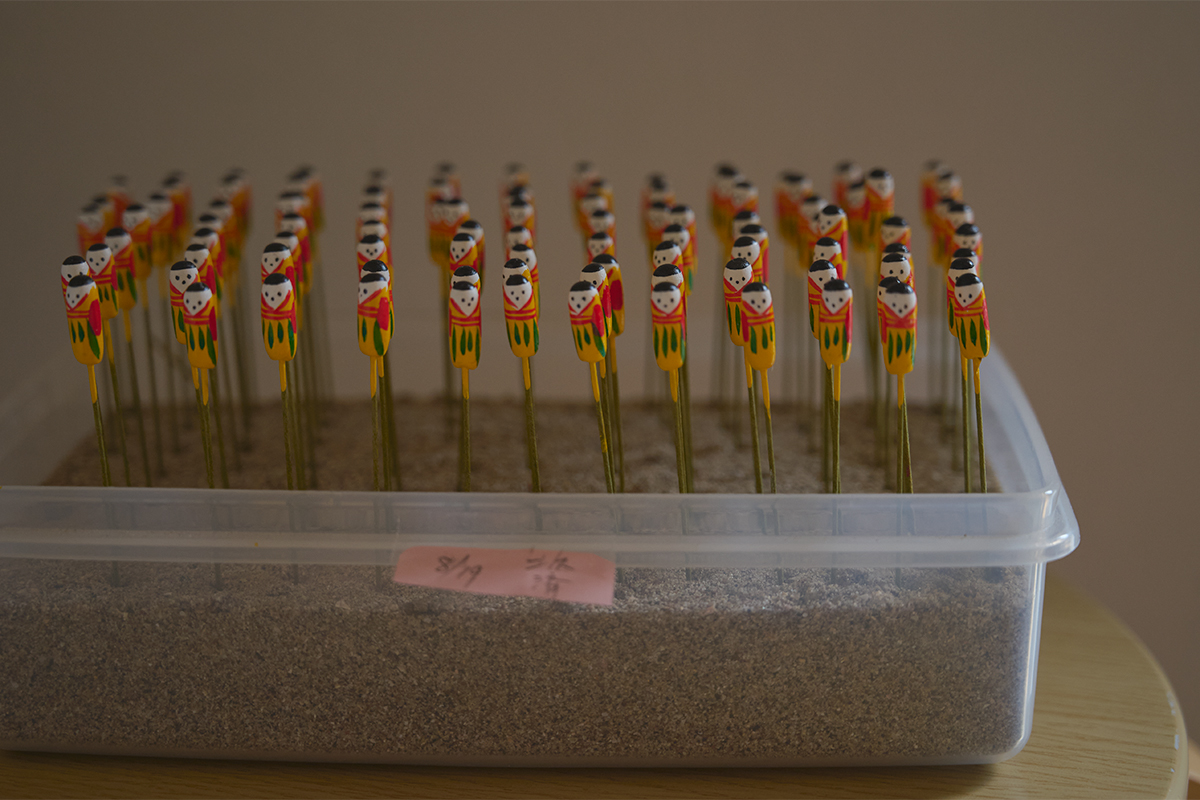 When the brush is lifted to write, a tiny bean-shaped doll hidden in the handle pops up with a cheerful nod.
When the brush is lifted to write, a tiny bean-shaped doll hidden in the handle pops up with a cheerful nod.
In this hot-spring town, where travelers have gathered for centuries, a distinctive local craft was born. According to legend, about 1,400 years ago, Emperor Kotoku—grieving his lack of an heir—stayed in Arima, where soon after the birth of Prince Arima was celebrated. Inspired by this tale, the doll maker Isuke in the Muromachi period (1336–1573) created the Arima Ningyo Fude, or “Arima Doll Brush.” By the Edo period (1600s–1800s), the Arima Brush had become renowned across Japan, counted among the Three Great Brushes of Japan along with those of Nara and Edo.
Its defining features are the firm resilience of the shaft and the cohesion of the tip. The brush’s springiness allows for expressive lines of varying thickness, enabling fine, graceful calligraphy.
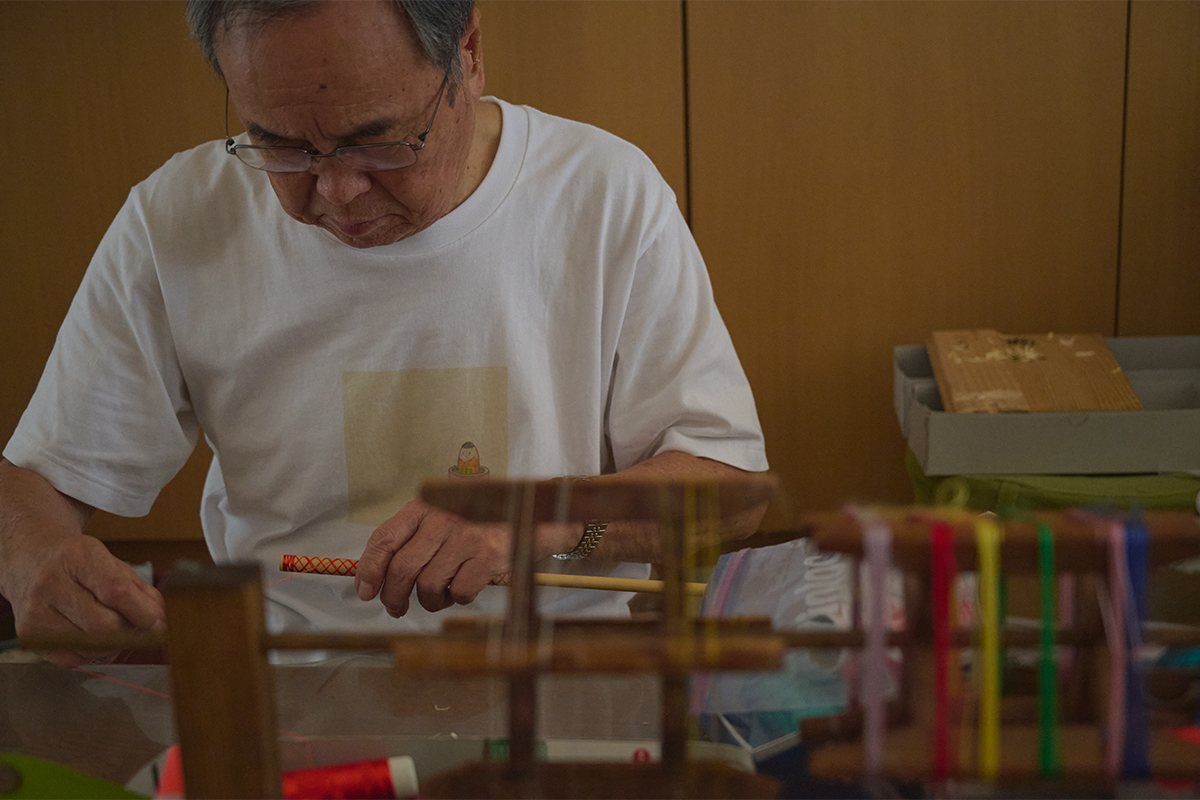 Today, the only remaining Arima Brush workshop is Haifukiya Nishida Fude-ten, where visitors can watch artisans craft brushes by hand right before their eyes.
Today, the only remaining Arima Brush workshop is Haifukiya Nishida Fude-ten, where visitors can watch artisans craft brushes by hand right before their eyes.
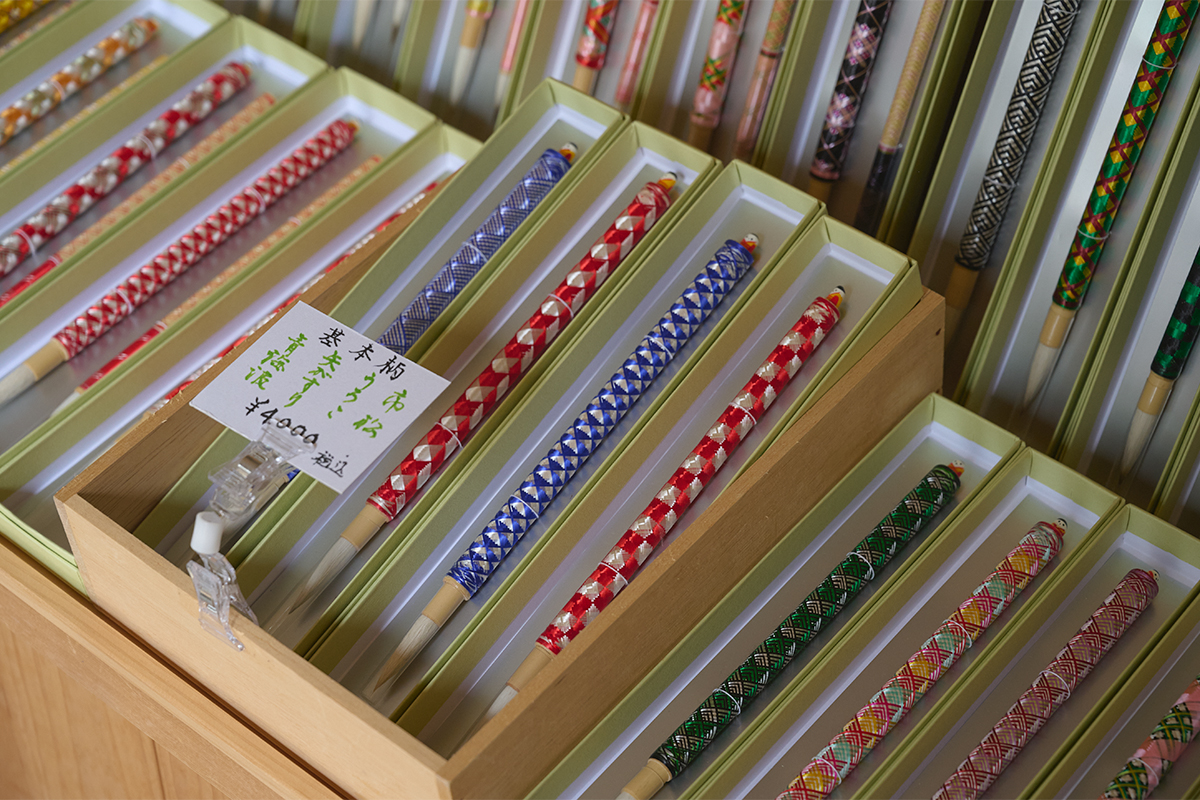 Makeup brushes made in Kumano, Hiroshima, are wrapped in traditional Japanese patterns using silk threads dyed in Kyoto’s Nishijin district. From 4,000 yen each.
Makeup brushes made in Kumano, Hiroshima, are wrapped in traditional Japanese patterns using silk threads dyed in Kyoto’s Nishijin district. From 4,000 yen each.
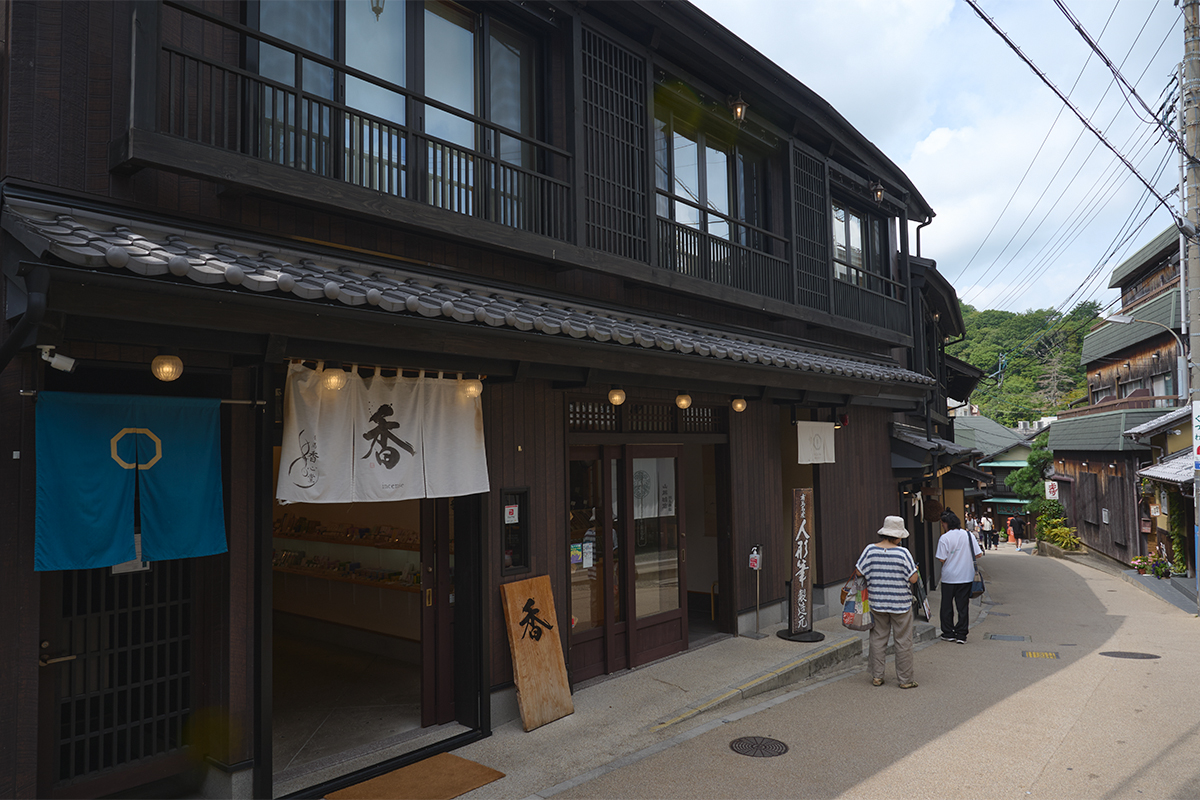 Above the shop in the same townhouse is Arima Koyado Hataya, a casual lodging offering comfortable stays without meals.
Above the shop in the same townhouse is Arima Koyado Hataya, a casual lodging offering comfortable stays without meals.
On the first floor of the Arima Toys and Automata Museum, located opposite Kin no Yu, the “Toy Workshop” offers a hands-on Arima Doll Brush automaton-making experience (participation fee: 5,000 yen).
The Refined Tradition of the Arima Geiko
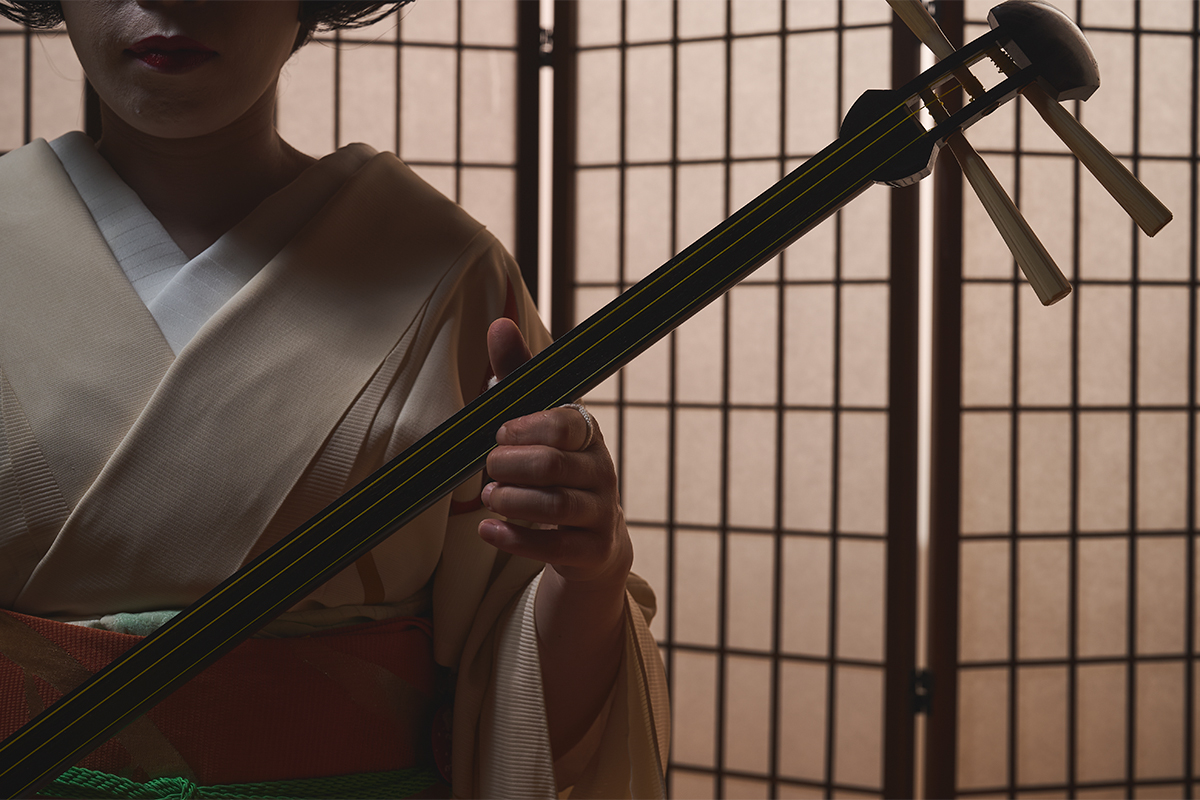 On stage at Geiko Café Ito.
On stage at Geiko Café Ito.
From the Edo period through the Meiji and Taisho eras (1603–1926), Arima’s geiko graced the social scene of this hot-spring town with elegance and color. They represent the only remaining authentic onsen geiko culture in the Kansai region—standing alongside Kyoto’s Hanamachi and Osaka’s Kitashinchi as a hallmark of refined entertainment.
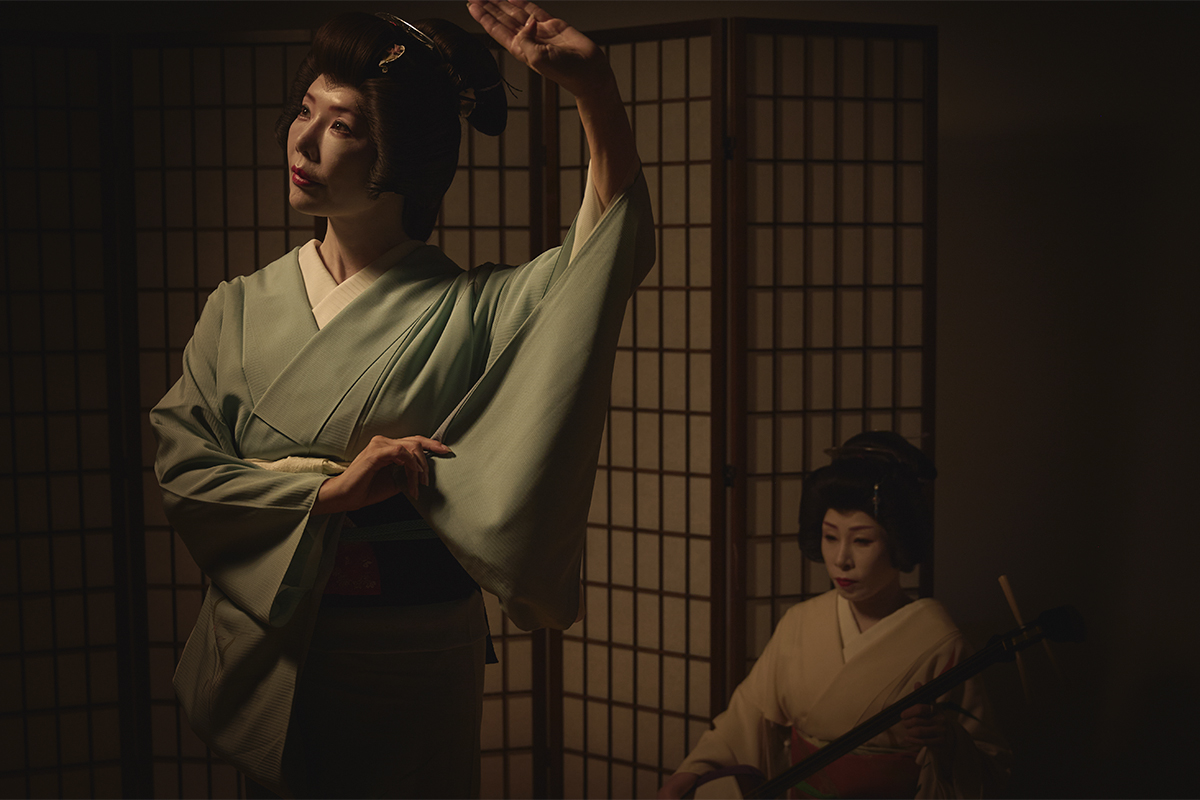 Even today, Arima geiko are invited to banquets and official events nationwide, performing traditional Japanese dance, hauta, and kouta songs.
Even today, Arima geiko are invited to banquets and official events nationwide, performing traditional Japanese dance, hauta, and kouta songs.
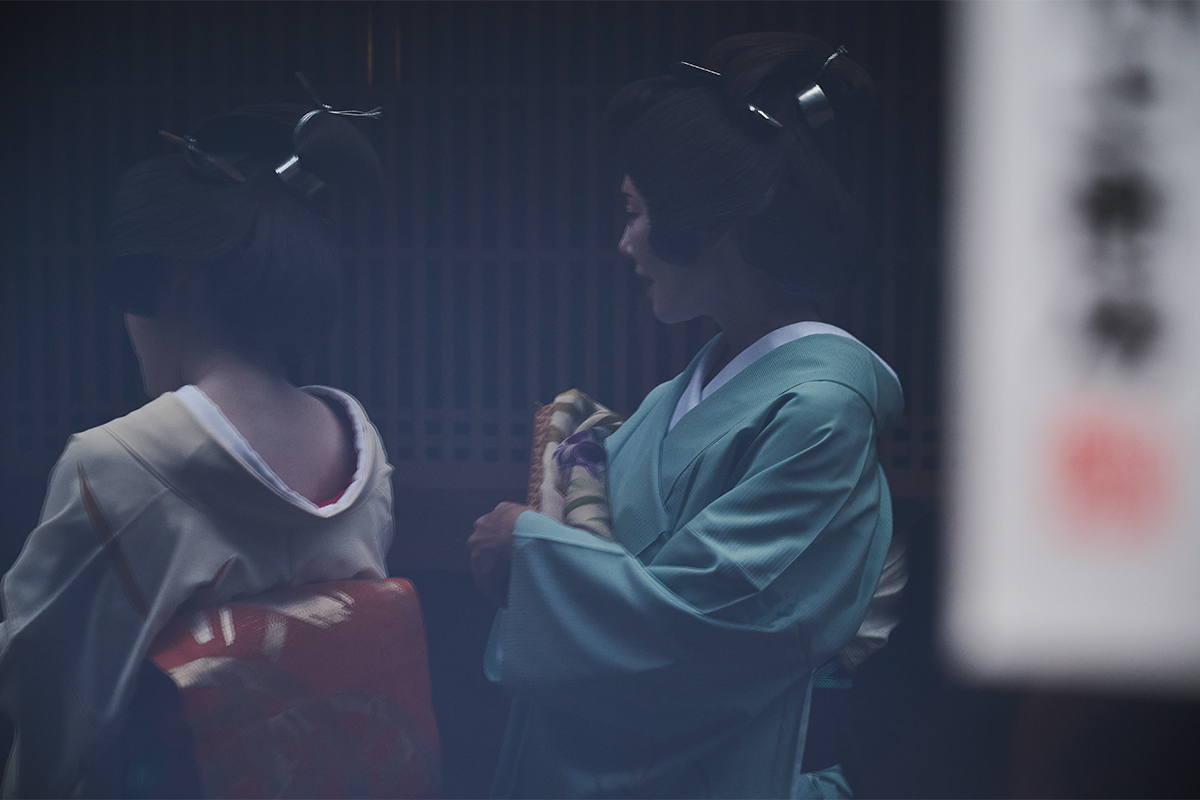 When geiko stroll through the streets of Arima, their presence alone adds a touch of grace to the town’s nostalgic scenery.
When geiko stroll through the streets of Arima, their presence alone adds a touch of grace to the town’s nostalgic scenery.
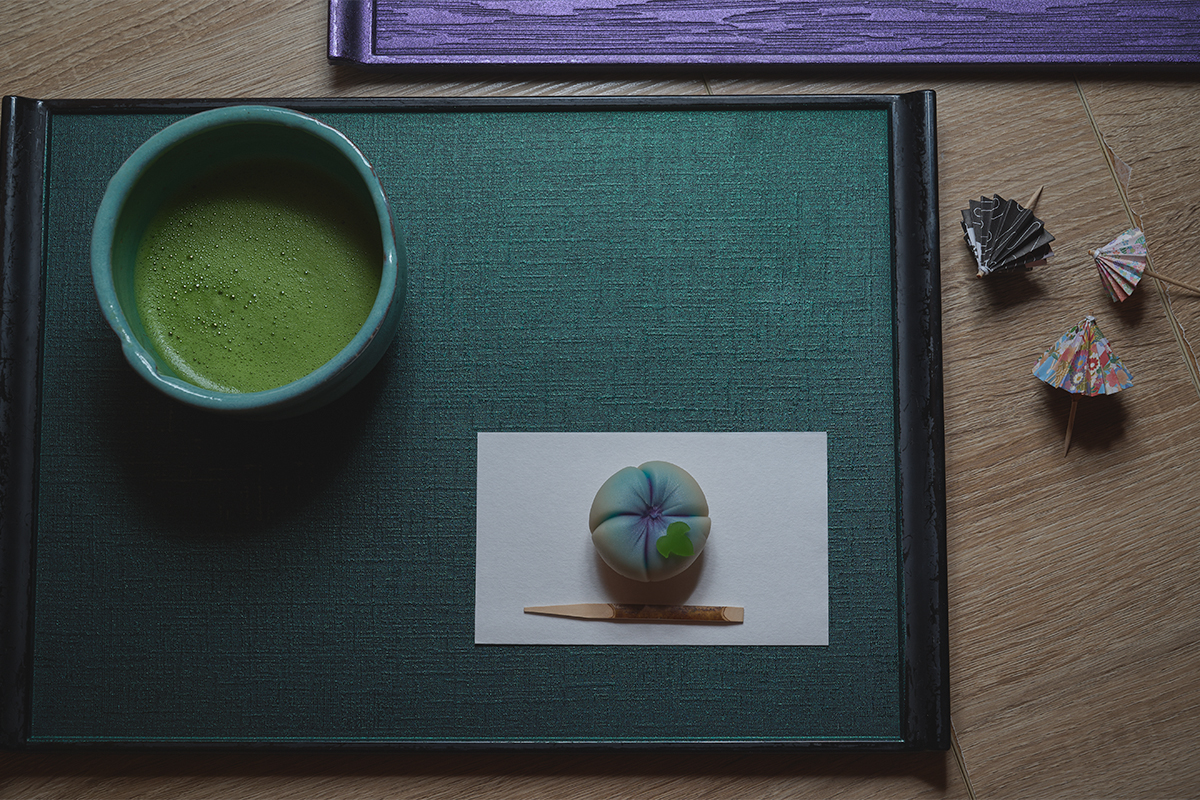 The café’s popular menu features a set of matcha and traditional sweets (1,800 yen).
The café’s popular menu features a set of matcha and traditional sweets (1,800 yen).
At Geiko Café Ito, visitors can enjoy geiko dance performances and ozashiki parlor games in an accessible, relaxed setting. The dance performance viewing fee is 1,500 yen, while the Arima Geiko Transformation Experience—in which guests are dressed and styled by active geisha—costs 33,000 yen.
Experiencing the refined culture of the geiko offers a deeper sense of Arima’s timeless charm.
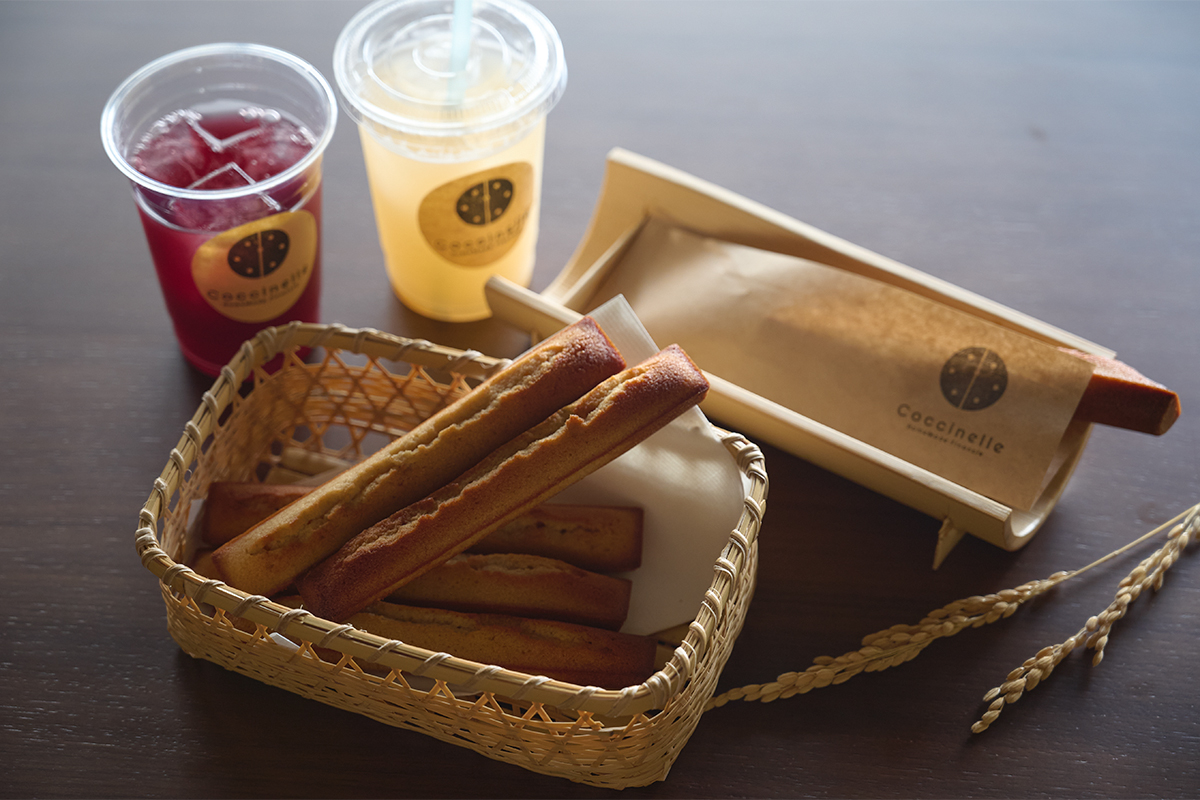 Financier cakes available in three flavors: plain (350 yen), matcha, and chocolate (400 yen each). Pair with a refreshing additive-free grape juice (650 yen).
Financier cakes available in three flavors: plain (350 yen), matcha, and chocolate (400 yen each). Pair with a refreshing additive-free grape juice (650 yen).
Opened in April 2025, Coccinelle is a favorite shop of geiko Itsuna. Its handmade financier cakes are additive-free, gluten-free, and made with rice flour from a house blend. Crisp on the outside and soft within, they’re perfectly sized for strolling the streets of Arima—a delightful companion for a leisurely walk.
The Oldest Inn in Arima: Loved by Tanizaki
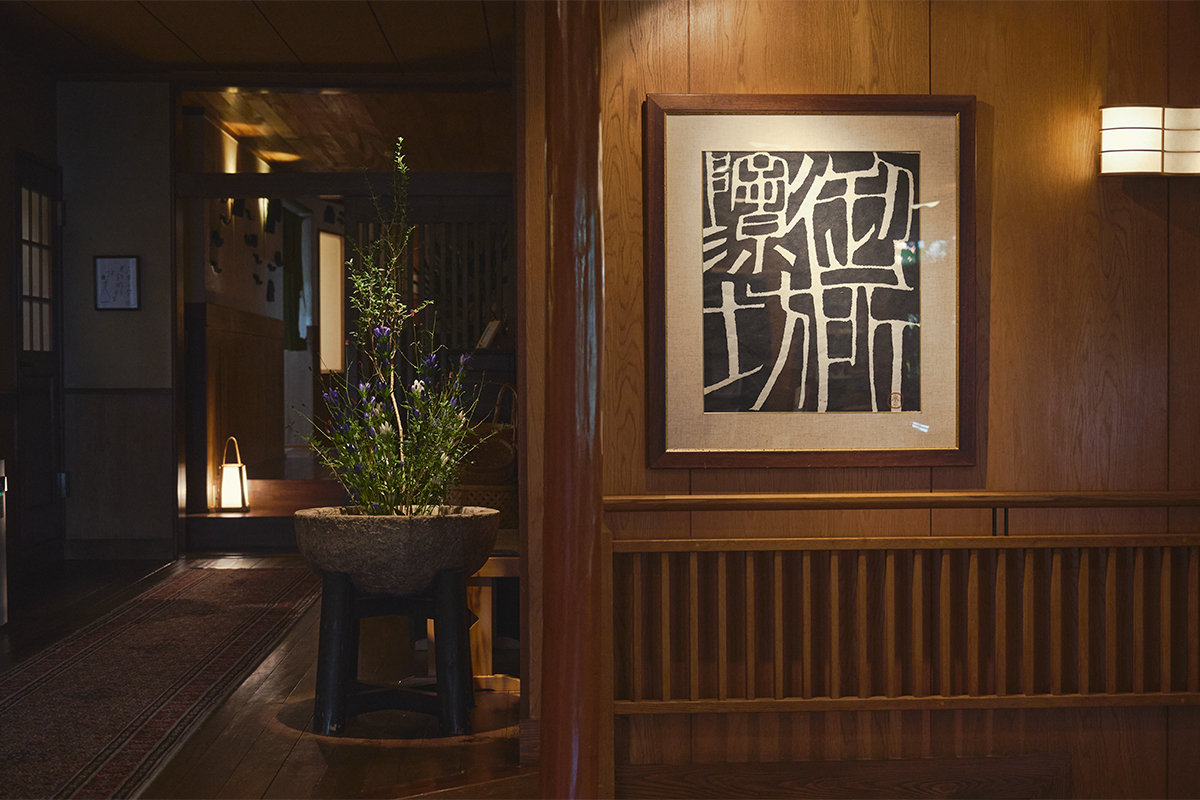 The front desk at Goshobo. Inside the inn, calligraphy and poetry works with stories behind them are displayed.
The front desk at Goshobo. Inside the inn, calligraphy and poetry works with stories behind them are displayed.
Founded roughly 800 years ago, Goshobo is the oldest inn in Arima and stands at the very heart of the hot-spring town—its history inseparable from that of Arima itself.
The deep eaves of its wooden architecture, the soft light filtering through shoji paper screens, the stone-paved garden paths—everywhere within the inn breathes the “beauty of shadow” that Jun’ichiro Tanizaki so admired in his essay In Praise of Shadows. Its dimmed lighting and tranquil atmosphere evoke both nostalgia and refinement—a space where guests can truly experience the aesthetics of shadow and light.
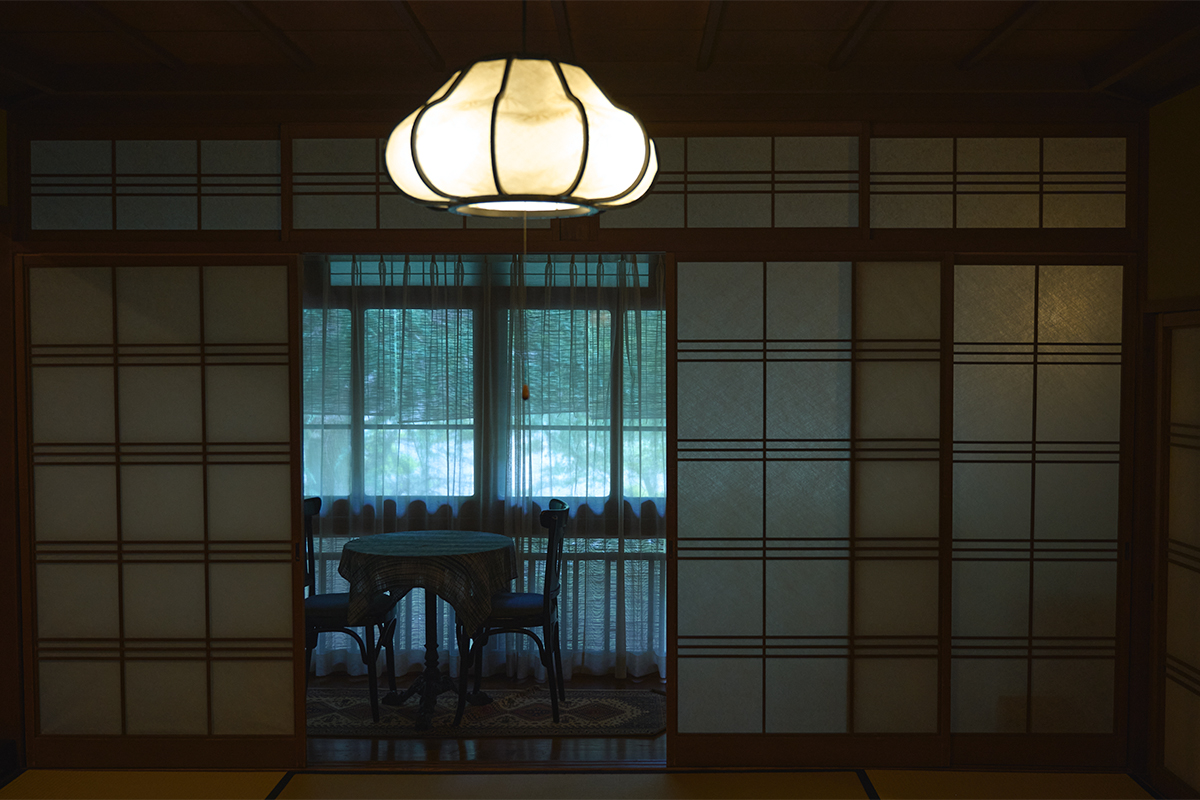 “RAKU,” a guest room with both tatami and Western-style spaces. One night with two meals (based on double occupancy) from 39,400 yen per person.
“RAKU,” a guest room with both tatami and Western-style spaces. One night with two meals (based on double occupancy) from 39,400 yen per person.
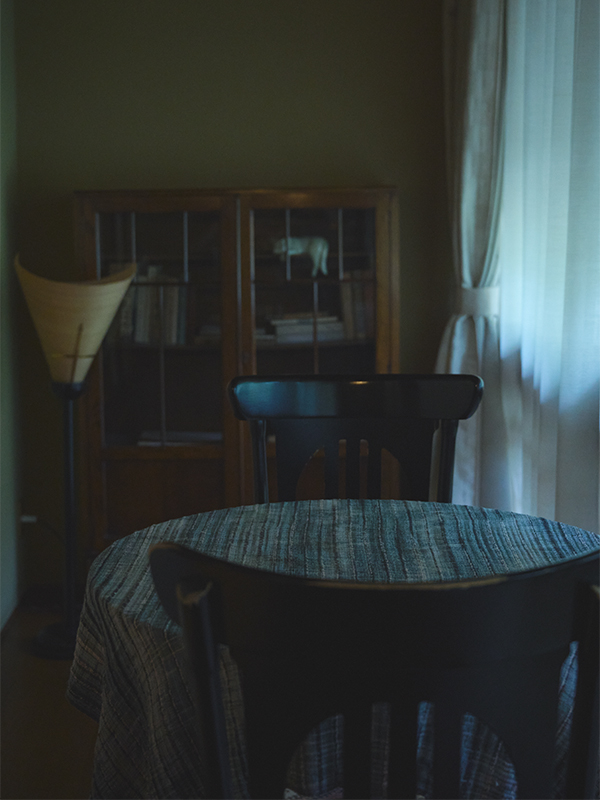
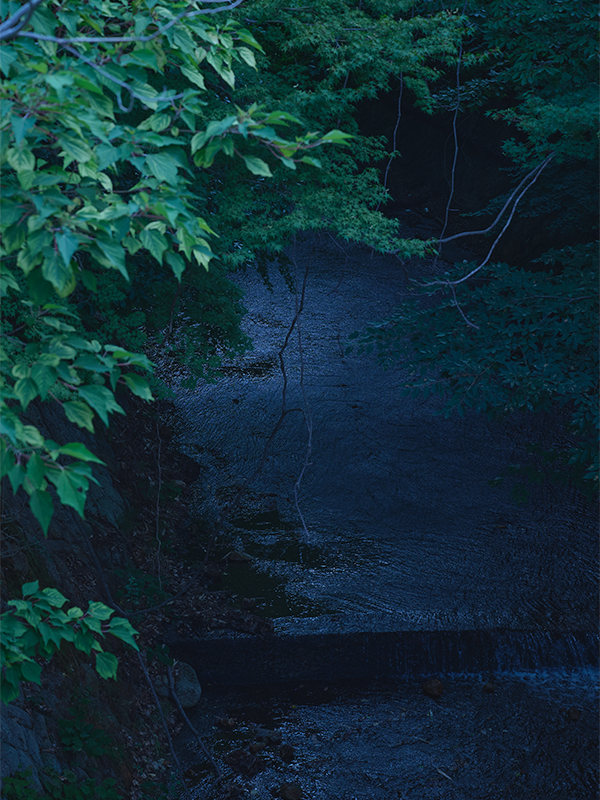
Here, as they listened to the murmur of the Takigawa River, many great writers of the past found inspiration for their masterpieces.
The room RAKU recreates the atmosphere of Goshobo as it was when Tanizaki stayed and wrote his novels. Inside, guests can view books, calligraphy, and ceramics related to Tanizaki and artist Seiji Sanda.
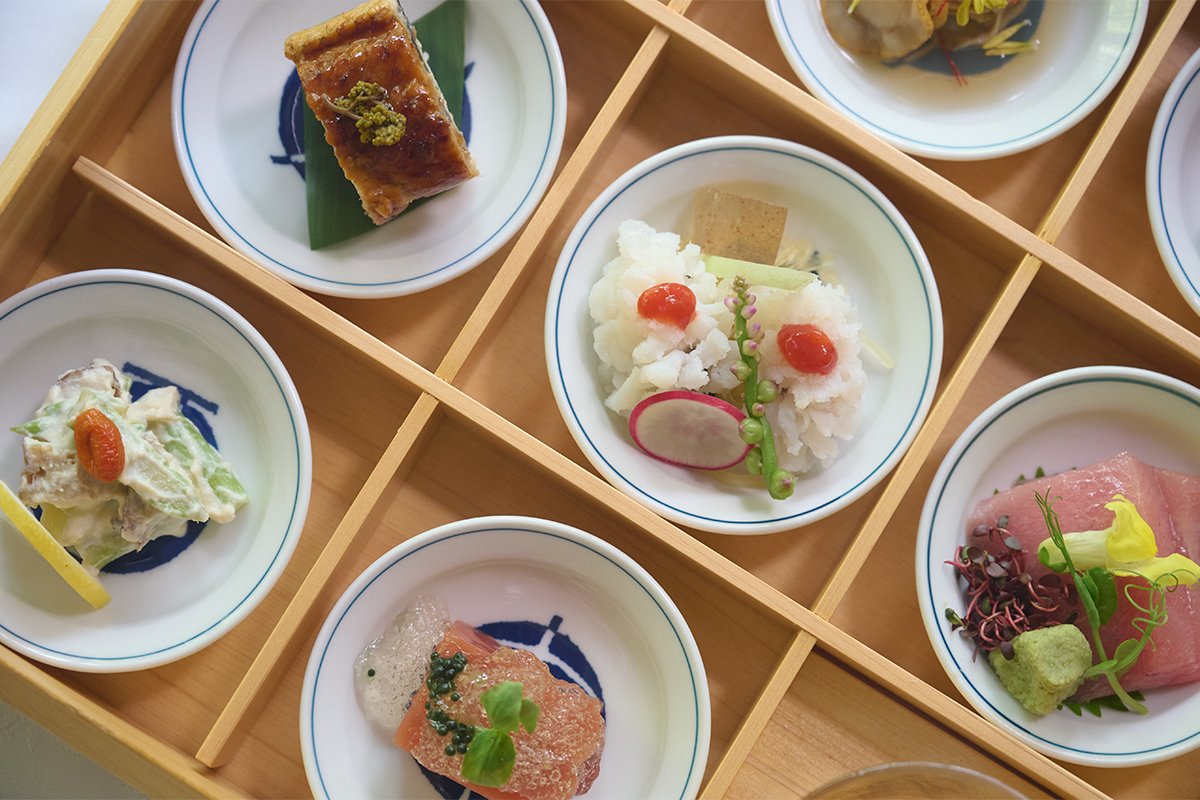
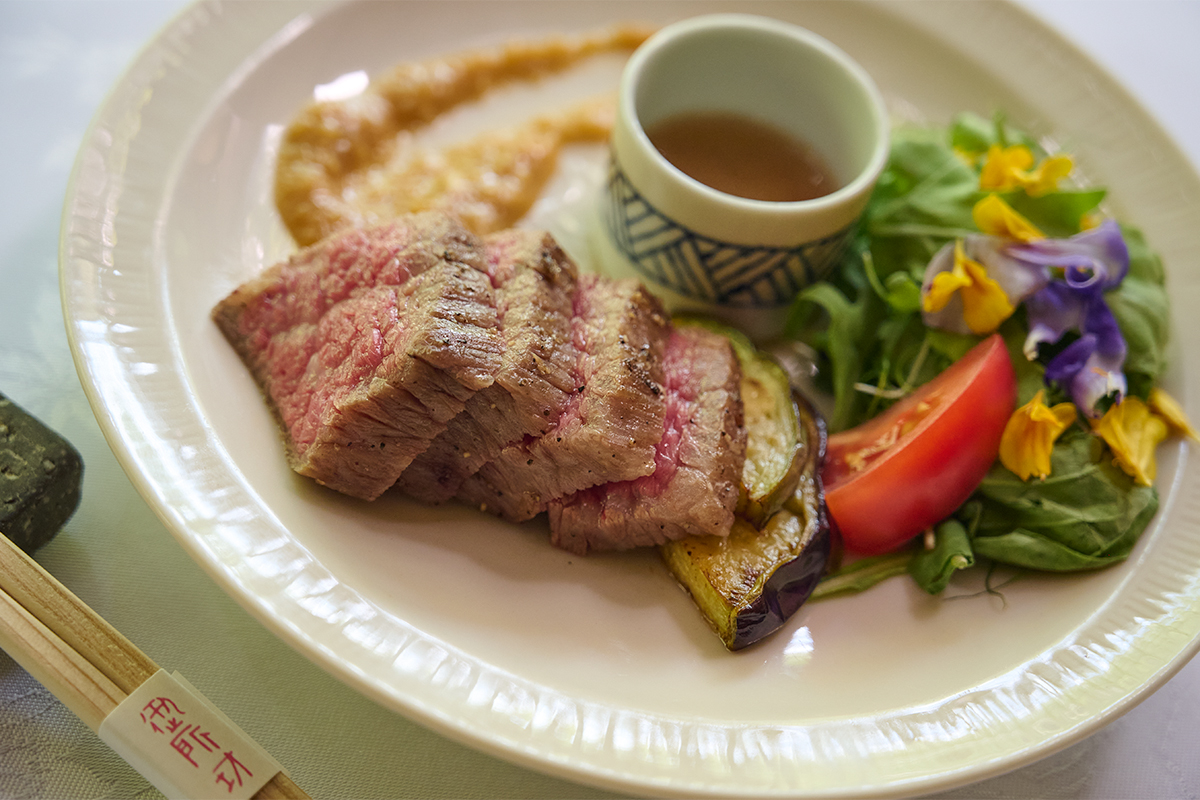 Dinner is a multi-course kaiseki meal featuring seasonal dishes such as appetizers, sashimi, grilled items, fried delicacies, meat dishes, and dessert.
Dinner is a multi-course kaiseki meal featuring seasonal dishes such as appetizers, sashimi, grilled items, fried delicacies, meat dishes, and dessert.
Arima, often called “the inner retreat of Kansai,” was once a favored resort for emperors and shoguns. From their style of hospitality was born yamaga ryori—rustic mountain cuisine that celebrates the natural bounty of the land. At Goshobo, meals are served in this spirit: simple, seasonal, and unadorned, allowing guests to savor nature’s gifts just as they are.
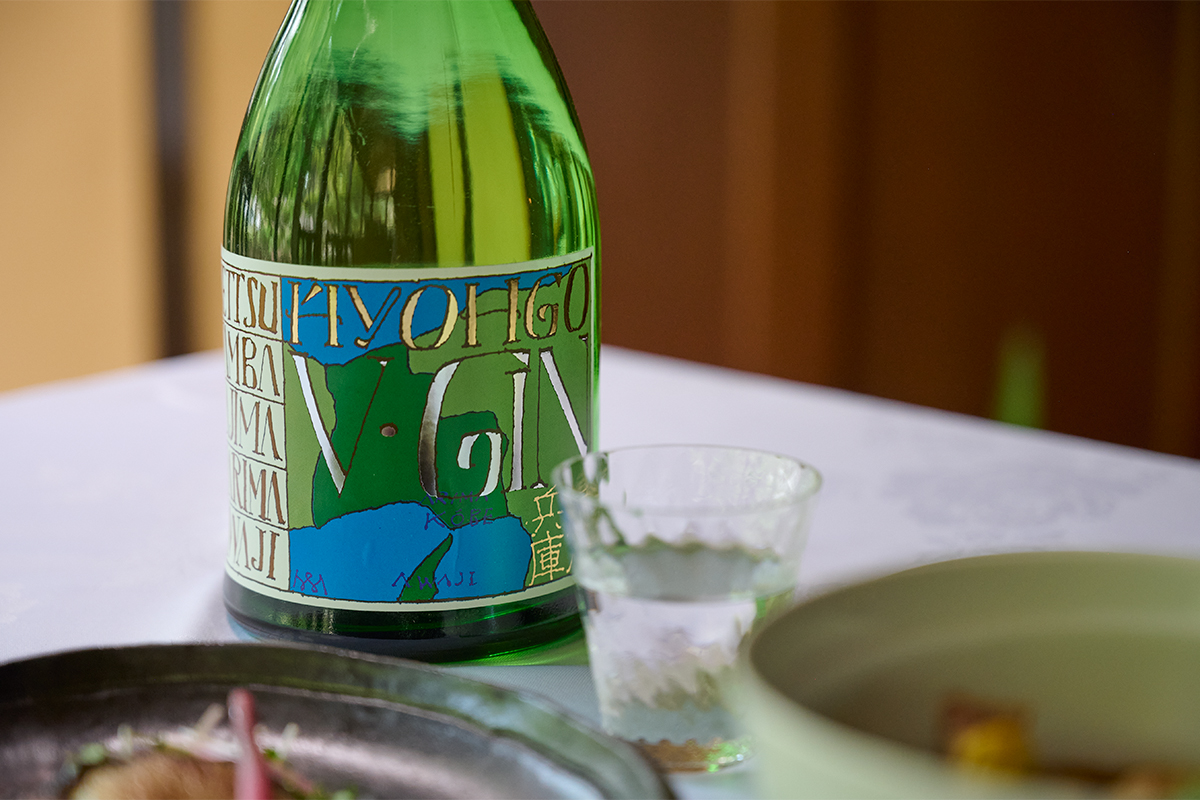 The craft gin “Hyogo Vi-Gin,” created in collaboration with Nishiyama Brewery in Tamba. It combines local specialties from Hyogo’s five regions: Tajima wasabi, Tamba blueberries, Harima yuzu, Settsu Arima sansho pepper, and Awaji Naruto oranges. Blending these diverse flavors into one, it captures the distinctive essence of Hyogo with a crisp, spicy finish.
The craft gin “Hyogo Vi-Gin,” created in collaboration with Nishiyama Brewery in Tamba. It combines local specialties from Hyogo’s five regions: Tajima wasabi, Tamba blueberries, Harima yuzu, Settsu Arima sansho pepper, and Awaji Naruto oranges. Blending these diverse flavors into one, it captures the distinctive essence of Hyogo with a crisp, spicy finish.
Arima’s greatest charm lies in the way hot-spring culture, literature, gastronomy, and history converge in one place.
Through the mists of its hot springs and the quiet beauty of the ancient capital, a journey tracing light and shadow becomes more than sightseeing—it becomes an encounter with the deeper soul of Japanese culture.
BOOK YOUR STAY IN ARIMA
(Featured Spots)
Tenryu-ji
Bamboo Grove Path
https://kyoto.travel/en/areas/saga-arashiyama/
https://kyoto.travel/fr/areas/saga-arashiyama/
https://kyoto.travel/es/areas/saga-arashiyama/
https://kyoto.travel/cn/areas/saga-arashiyama/
https://kyoto.travel/tw/areas/saga-arashiyama/
https://kyoto.travel/ko/areas/saga-arashiyama/
Kin no Yu
https://arimaspa-kingin.jp/kin-01.htm
Haifukiya (Nishida Fude-ten)
Arima Koyado Hataya
Arima Toy Museum
Geiko Café Ito
Coccinelle
https://www.instagram.com/coccinellearima/
Goshobo
Nishiyama Brewery





